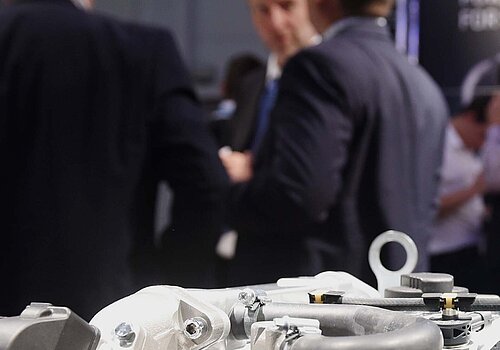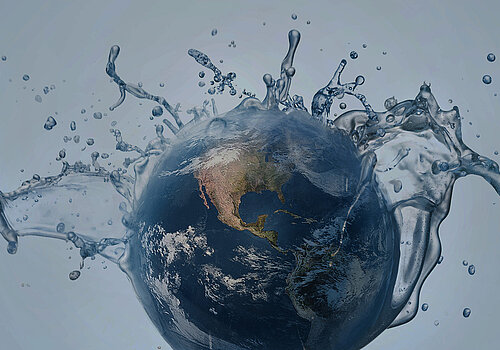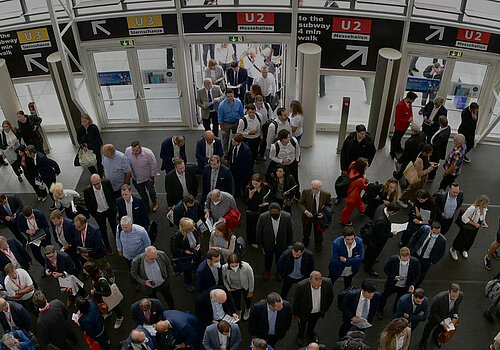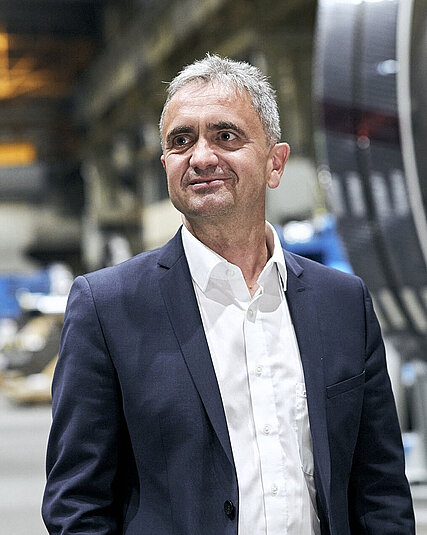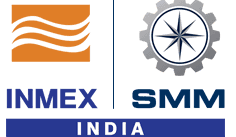
About SMM

The world’s leading trade fair for the maritime industry
With over 2,200 exhibitors and about 48,000 visitors from all over the world, SMM (Shipbuilding, Machinery and Marine Technology trade fair) continues to cement its position as the most important event in the maritime industry calendar.
The trade fair offers a perfect stage for gathering insights, networking, cementing business deals and contributing to debates with the thought leaders in this sector.
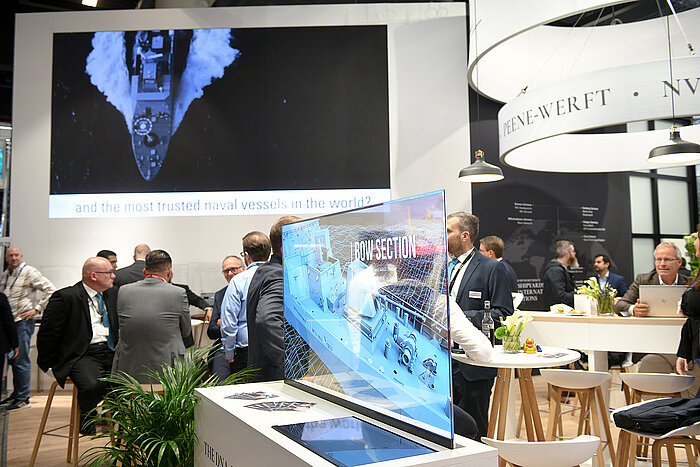
SMM 2024 Product categories
The expertise of the internationel maritime industry is represented in its entirely at SMM. Exhibitors include large-scale industrial ship and shipyard engineering, ship fittings and equipment, cargo handling systems, offshore engineering, maritime services, and much more.
A detailed summary of the SMM spectrum can be found below:
1.1 Seagoing vessels
1.1.1 Bulk carriers
1.1.2 Car carriers
1.1.3 Container ships
1.1.4 Cruise ships
1.1.5 Ferries, Ropax vessels
1.1.6 Fishing vessels
1.1.7 General cargo vessel, heavy lift vessels
1.1.8 Gas carriers
1.1.9 Multipurpose vessels
1.1.10 Oil tankers
1.1.11 Product and chemicals carriers
1.1.12 RoRo ships
1.1.13 Super yachts / mega yachts
1.1.14 Other special vessels
1.2 Inland waterway crafts
1.2.1 Inland cargo vessels
1.2.2 Ferries
1.2.3 Passenger vessels
1.3 Naval vessels
1.3.1 OPV / IPV offshore and inshore patrol vessels
1.3.2 Special purpose and auxiliary naval vessels
1.3.3 Submarines
1.3.4 Surface warships
1.4 Offshore vessels
1.4.1 AHTS (anchor-handling tug supplies)
1.4.2 Crew transfer vessels
1.4.3 Drill ships
1.4.4 FPSO / FSO / FSU / FSRU
1.4.5 Offshore supply vessels
1.4.6 Installation vessels
1.5 Special purpose ships
1.5.1 Crafts for authorities and special-purpose ships
1.5.2 Dredgers
1.5.3 Icebreakers
1.5.4 Research vessels (fishery and scientific)
1.5.5 Tugs / push boats
1.5.6 Other special purpose vessels
1.6 Ship sections, superstructures and deckhouses
1.7 Ship recycling
2.1 Accessories
2.2 Docks and pontoons
2.3 Lifting and transport technology
2.4 Measuring technology
2.5 Metal processing and metalworking
2.6 Paint spraying equipment
2.7 Ship cleaning
3.1 Shipbuilding materials and semi-finished goods
3.1.1 Non-ferrous metals
3.1.2 Plastic material
3.1.3 Shipbuilding steel
3.1.4 Other shipbuilding materials
3.2 Canals and cable channels
3.3 Doors and windows
3.3.1 Doors
3.3.2 Locks and hinges
3.3.3 Windows and portholes
3.4 Heat, noise and fire insulation
3.5 Lifts and escalators
3.6 Pipes and hoses
3.7 Room layout including ventilation and air-conditioning plants
3.7.1 for corridors, lobbies, accommodation, dining rooms, lounges and shops
3.7.2 for operational and catering areas, nautical rooms, workshops and stores
3.7.3 for recreation areas, hospital and sanitary facilities
3.8 Galley, laundry and provision storage
3.8.1 Galley equipment
3.8.2 Laundry equipment
3.8.3 Provision stores and cold stores
3.9 Ship, deck and safety equipment
3.9.1 Anchors, anchor chains, fittings and accessories
3.9.2 Deck coverings
3.9.3 Deck machinery and accessories
3.9.4 Hatch covers and fittings
3.9.5 Insulation
3.9.6 Marine coatings, anti-corrosion materials
3.9.7 NBC - protection
3.9.8 Safety and rescue equipment
3.10 Ship hull protection
3.10.1 Corrosion protection
3.10.2 Electric cathodic protection, ICCP
3.11 Stairways, rails, top rails
3.12 Stock and decoration, lighting, interior fittings
3.12.1 Furniture, soft furnishings, covers, floor coverings
3.12.2 Interior decoration, colour schemes, paints for interior use
3.12.3 Light fittings
3.13 Walls, ceilings, furniture systems and modules
3.13.1 Cabins and cabin modules
3.13.2 Furniture systems and modules
3.13.3 Walls and ceilings
4.1 Bearings
4.2 Brakes
4.3 Combustion engines
4.3.1 < 1 MW
4.3.2 1-30 MW
4.3.3 > 30 MW
4.4 Couplings
4.5 Drive shaft units
4.6 Engine components
4.7 Engine maintenance
4.8 Exhaust gas systems / exhaust gas treatment
4.9 Fuel cell systems
4.10 Gears
4.11 Hybrid drives
4.12 Injection systems
4.13 Nuclear systems
4.14 Turbochargers
4.15 Other drive systems
4.16 Tools and accessories
5.1 Compressed air systems
5.2 Cooling water systems
5.3 Diesel generators
5.4 Fuel systems
5.4.1 Ammonia
5.4.2 Dual-fuel
5.4.3 Electric storage systems
5.4.4 Hydrogen
5.4.5 LNG
5.4.6 Methanol / Biofuels
5.4.7 MFO / MDO
5.5 Fuels, coolants and lubricants
5.6 Lubricating oil systems
5.7 Shaft-driven generators
5.8 Sludge and dirty oil systems
6.1 Energy-saving devices (ESD)
6.2 Fin stabiliser units
6.3 Podded drives & rudder propellers
6.4 Propellers
6.5 Steering gears
6.6 Thrusters & pump jets
6.7 Water-jet drives
7.1 Air-conditioning and ventilation systems
7.2 Ballast water treatment systems
7.3 Cooling systems
7.4 Environmental protection technology and products
7.5 Fire detecting and alarm systems
7.6 Fire extinguishing systems
7.7 Fresh water systems
7.8 Heating systems
7.9 Heel compensation units
7.10 Pump and ballast systems
7.11 Ship safety equipment
7.12 Special purpose cranes and hoists
7.13 Tank cleaning systems
7.14 Tank filling systems
7.15 Tank heating systems
7.16 Waste systems
7.17 Waste water systems
8.1 Cargo handling systems for liquid cargo
8.2 Cargo-handling systems for other cargo
8.3 Cranes (container, bulk and other)
8.4 Cranes (heavy lift)
8.5 Cryogenic storage and handling systems for liquefied gases
8.6 Lashing material and systems
8.7 Pneumatic transfer systems
8.8 Other mechanical loading and unloading systems
9.1 IT systems
9.1.1 AI systems
9.1.2 Hardware systems
9.1.3 Software systems
9.2 Electric energy generation and conversion
9.2.1 Converters
9.2.2 Electric motors
9.2.3 Generators, gensets
9.2.4 Outside lighting systems
9.2.5 Power take-off generators
9.2.6 Shore power intake systems
9.2.7 Transformers
9.2.8 Transverters
9.3 Monitoring systems
9.4 Navigation and communication systems
9.4.1 Autopilot and trackpilot systems
9.4.2 Dynamic positioning systems
9.4.3 Electronic chart display and information systems (ECDIS)
9.4.4 Engine control room systems and equipment
9.4.5 External communication
9.4.6 Gyrocompasses
9.4.7 Integrated Bridge
9.4.8 Intra-ship communications
9.4.9 Navigation bridge systems and equipment
9.4.10 Radars
9.4.11 Steering control systems
9.5 Shipboard networks, switchgear, installation
9.6 Ship management systems
9.7 Ship operation and automation equipment
9.8 Warning and safety equipment
10.1 Marine data, measurement and seismic research technology
10.2 Offshore platforms
10.3 Offshore technology for exploitation of natural resources
10.4 Polar technology
10.5 Subsea technology
10.6 Systems and equipment for marine research
10.7 Systems and equipment for the control of marine pollution
11.1 Cargo handling and transport systems
11.2 External power supply systems
11.3 Gas storage, supply and transfer systems
11.4 Port security systems
11.5 Vessel traffic control
12.1 Classification
12.2 Consulting
12.3 Design
12.4 Documentation
12.5 Education and research
12.6 Hydrography
12.7 Institutions, organisations and associations
12.8 Logistics services
12.9 Ship suppliers/ship chandlers
12.10 Training and simulation
13.1 Counter-piracy systems
13.2 Critical infrastructure protection systems
13.3 Diving and underwater equipment
13.4 Drones
13.5 Other maritime security systems
Stay tuned
Visit our social media channels for more up-to-date information, photos and videos and subscribe to our newsletter.



